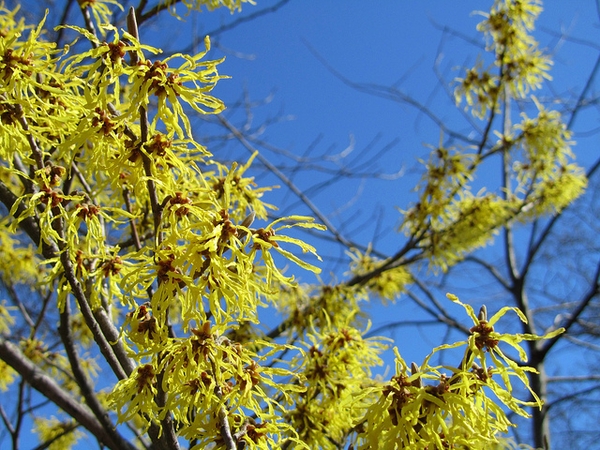What’s Blooming in February
go.ncsu.edu/readext?850154
en Español / em Português
El inglés es el idioma de control de esta página. En la medida en que haya algún conflicto entre la traducción al inglés y la traducción, el inglés prevalece.
Al hacer clic en el enlace de traducción se activa un servicio de traducción gratuito para convertir la página al español. Al igual que con cualquier traducción por Internet, la conversión no es sensible al contexto y puede que no traduzca el texto en su significado original. NC State Extension no garantiza la exactitud del texto traducido. Por favor, tenga en cuenta que algunas aplicaciones y/o servicios pueden no funcionar como se espera cuando se traducen.
Português
Inglês é o idioma de controle desta página. Na medida que haja algum conflito entre o texto original em Inglês e a tradução, o Inglês prevalece.
Ao clicar no link de tradução, um serviço gratuito de tradução será ativado para converter a página para o Português. Como em qualquer tradução pela internet, a conversão não é sensivel ao contexto e pode não ocorrer a tradução para o significado orginal. O serviço de Extensão da Carolina do Norte (NC State Extension) não garante a exatidão do texto traduzido. Por favor, observe que algumas funções ou serviços podem não funcionar como esperado após a tradução.
English
English is the controlling language of this page. To the extent there is any conflict between the English text and the translation, English controls.
Clicking on the translation link activates a free translation service to convert the page to Spanish. As with any Internet translation, the conversion is not context-sensitive and may not translate the text to its original meaning. NC State Extension does not guarantee the accuracy of the translated text. Please note that some applications and/or services may not function as expected when translated.
Collapse ▲Even though we are still in the midst of winter during the month of February, we can start to get little signs of spring by adding some late winter blooming plants to our landscapes. Here are a few plants to consider to add some color to the landscape in February:
Winter Jasmine (Jasminum nudiflorum)
Winter jasmine is a broad spreading shrub with arching stems. Winter jasmine has light yellow flowers from January to early spring. The foliage is glossy, emerald-green leaves that are divided into three leaflets. This is a good plant for banks and poor soil areas. Because of its trailing branches, winter jasmine works well along walls where the branches can flow over the side. Winter jasmine can grow rapidly and probably should be rejuvenated every 3 to 5 years by cutting plant to within 6 inches of the ground.
Witch Hazel (Hamamelis virginiana)
Witch Hazel is a native deciduous shrub or small tree that may grow 15 to 20 feet tall. This shrub flowers anywhere from late fall to late winter with yellow spider-like blooms that brighten dreary winter landscapes. Plant in full sun to partial shade though the best flowering will be seen in full sun locations. Soil should be moist, acidic, organically rich and well-draining. Pruning is not usually necessary except to maintain its shape. Witch Hazel is intolerant of drought but does is deer tolerate and has no serious pest problems. Witch Hazel can provide color in the winter and in the summer make a dense canopy to serve as a screen or tall hedge.

Witch Hazel (Hamamelis virginiana) is a native deciduous shrub with yellow spider-like blooms that brighten dreary winter landscapes.
Daphne (Daphne odora)
Winter daphne flowers from late January through early March. Winter daphne has a wonderful fragrance that can be used to entice anyone into their garden during the winter. Winter daphne is a small, mounded evergreen shrub with clusters of rosy pink to lavender blooms. Daphne can grow in sun to partial shade and needs well-drained soil. One downfall to this winter flowering shrub is that it has reportedly been short lived.
Camellia (Camellia japonica)
Camellias are a traditional garden favorite that provide beautiful flowers in the winter garden. There are many cultivars of camellias available for landscapes. Camellias have been a cherished plant in southern gardens for years, known for their flowers that bloom in the winter and range in color from white through pink to deep red. The flowers can be simple, single flowers with few petals or be double flowers that include numerous petals. Camellias range from large shrubs to small trees and have dark-green, broad-leaf evergreen leaves. Camellias tend to favor moist, acidic, well-drained, high- organic matter soils.
Flowering Quince (Chaenomeles hybrids)
Flowering Quinces are deciduous shrubs in the rose family from Asia. They are one of the first shrubs to bloom in late winter to early spring. The showy flowers come in shades of pink, red and white and usually appear before the foliage. Blooming occurs on old growth so prune sparingly. Depending on the species, they can grow anywhere from 2 to 6 feet tall and have a spreading growth habit. They may have thorns. Quinces prefer full sun to partial shade in moist well-drained soils but are tolerant of a variety of soil types. Best blooming occurs in full sun. They are drought tolerant once established. Quince can be used as a foundation plant or a shrub border. Deer will sometimes browse the shrub.
To learn of more plant ideas for your landscape, visit the North Carolina Extension Gardener Plant Toolbox.
Jessica Strickland is an Agriculture Extension Agent, specializing in horticulture for North Carolina Cooperative Extension in Wayne County.
Learn More!
- Sign up for the Wayne County Extension Gardening email list to receive timely gardening tips.
- Learn more by following us on Facebook and Instagram.




